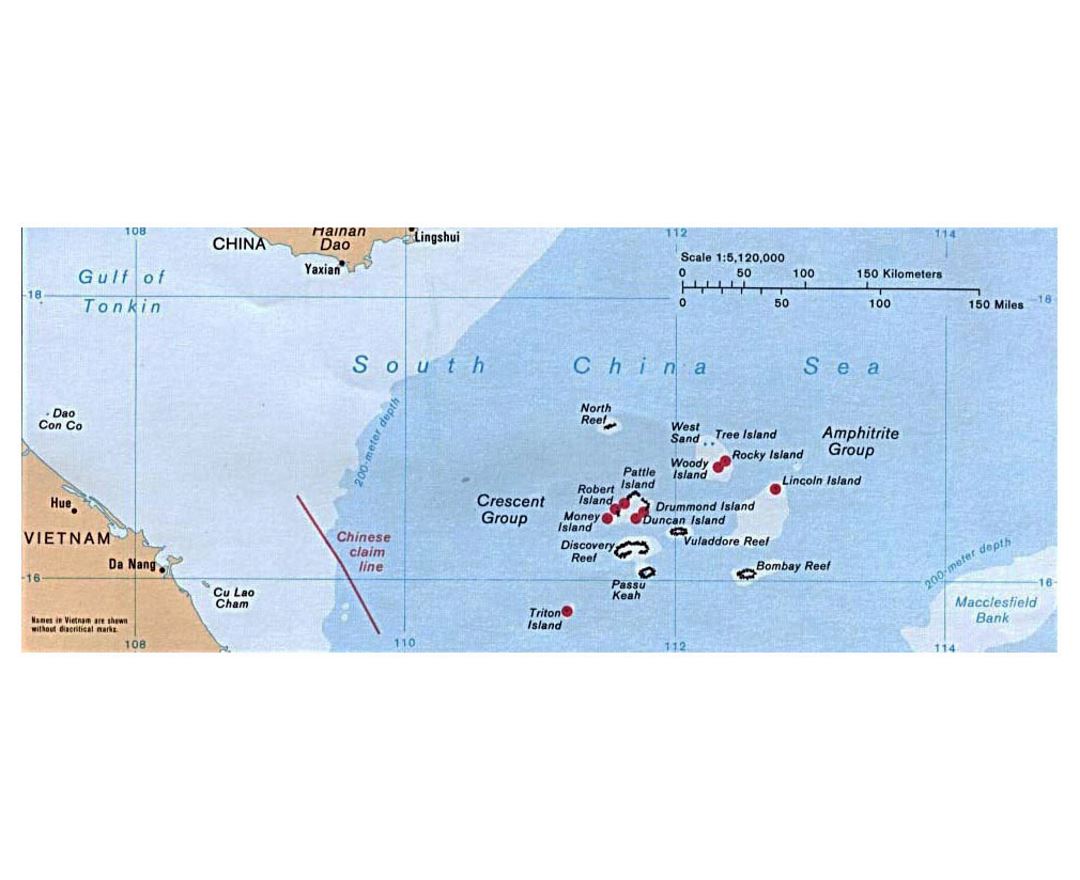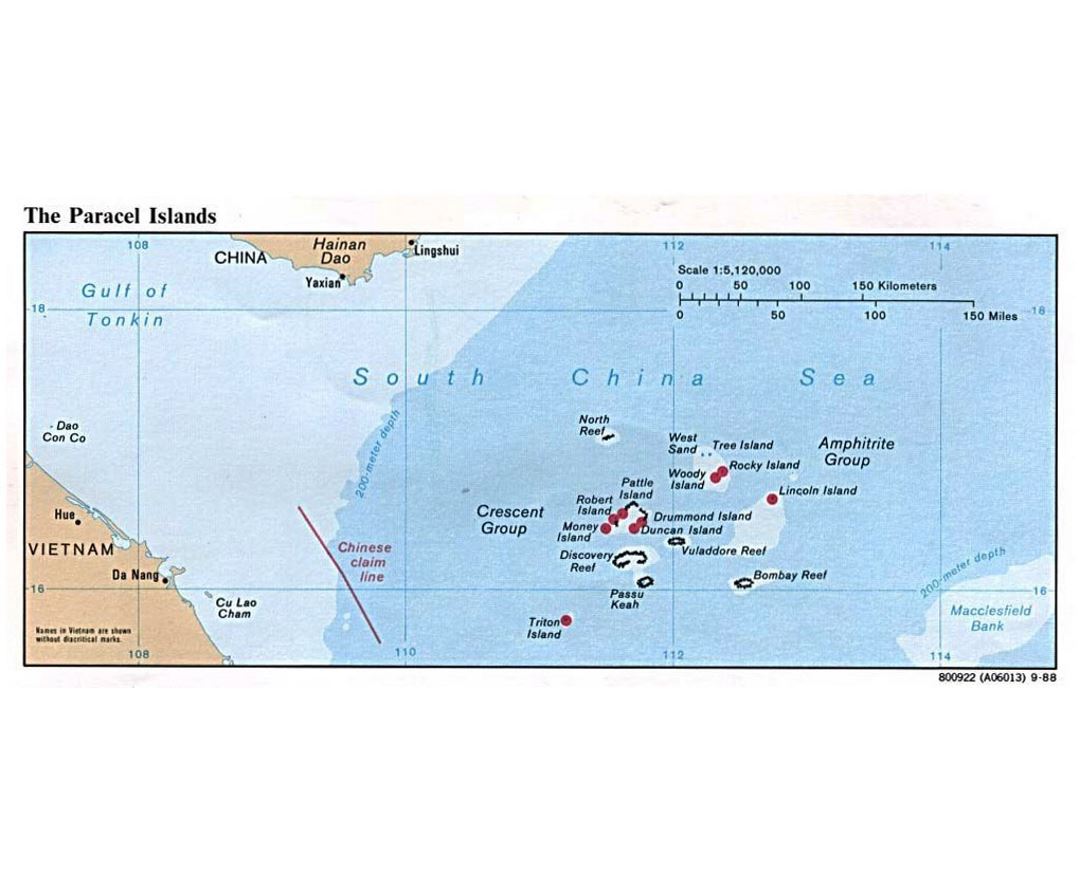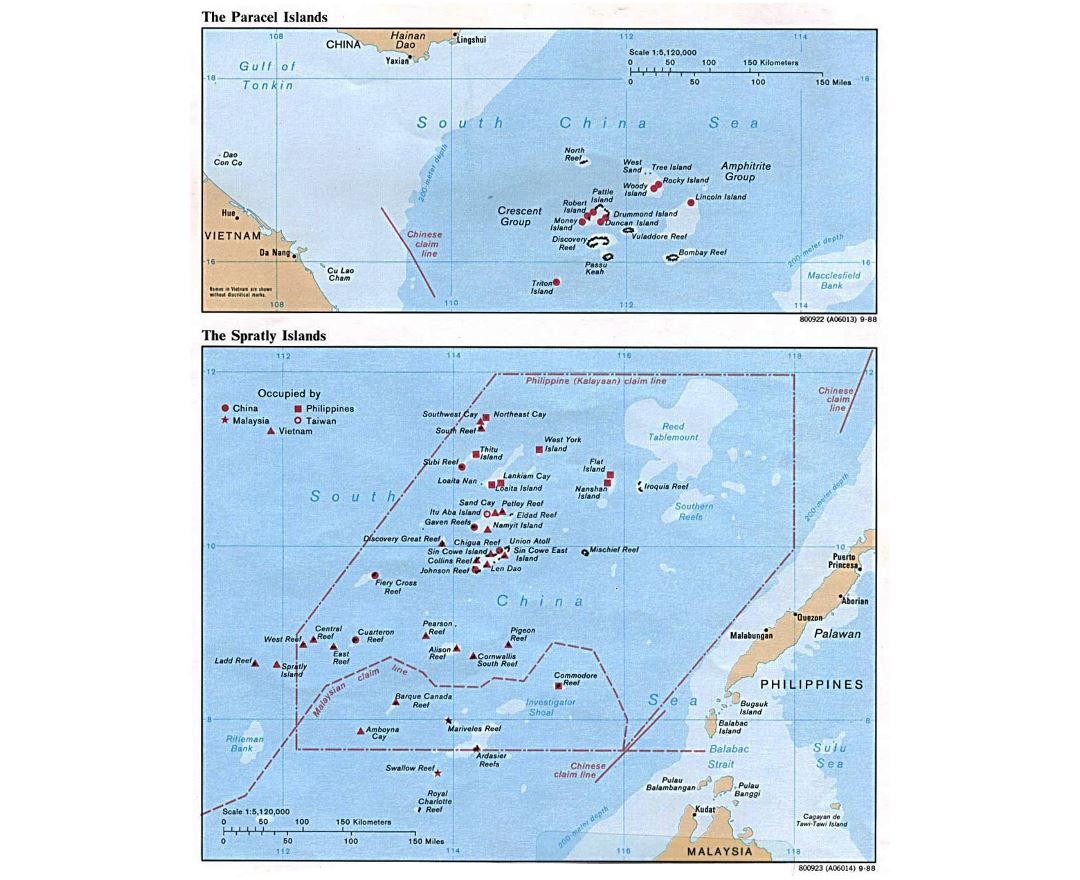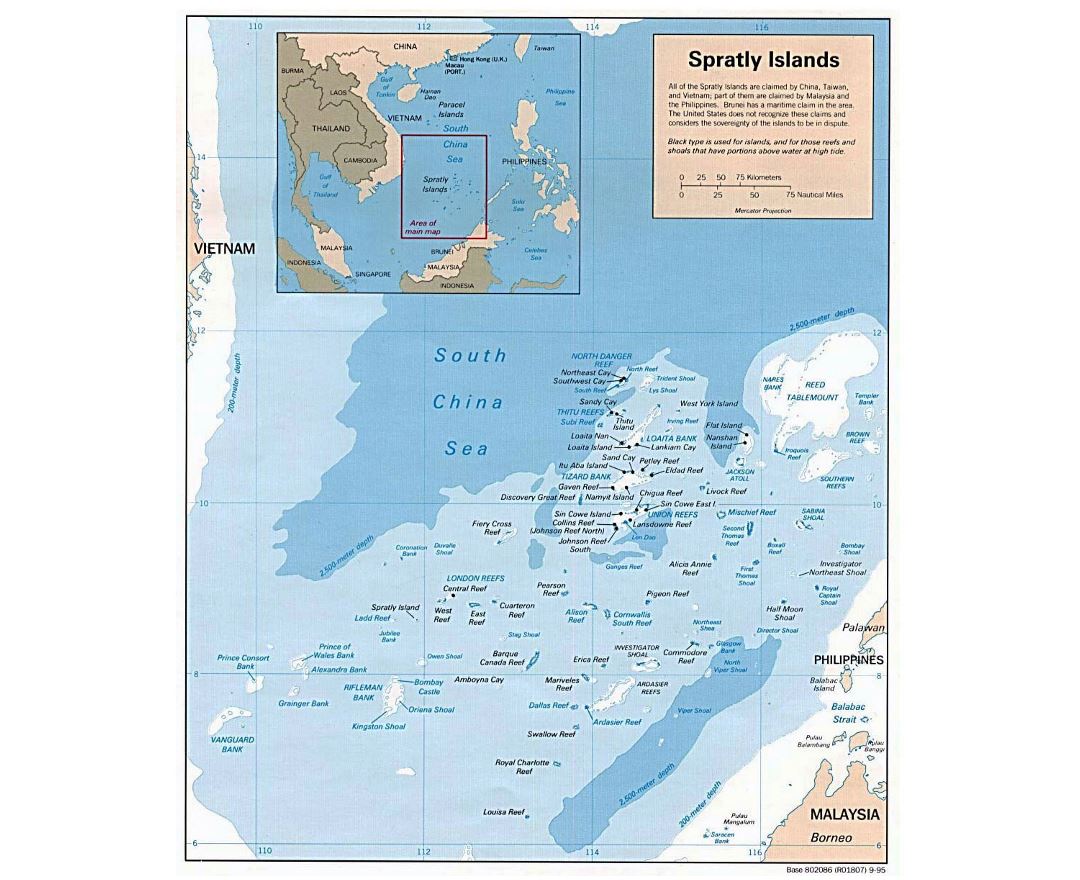Paracel Islands
The Paracel Islands, also known as Xisha in Chinese and Hoang Sa in Vietnamese, is a group of islands, reefs, banks and other maritime features in the South China Sea. It is controlled (and occupied) by the People's Republic of China, and also claimed by Taiwan (Republic of China) and Vietnam.
The archipelago includes about 130 small coral islands and reefs, most grouped into the northeast Amphitrite Group or the western Crescent Group. They are distributed over a maritime area of around 15,000 square kilometres (5,800 sq mi), with a land area of approximately 7.75 square kilometres (2.99 sq mi). The archipelago is approximately equidistant from the coastlines of China (PRC) and Vietnam, and approximately about one-third of the way from central Vietnam to the northern Philippines. It is home to Dragon Hole, the deepest, underwater sinkhole in the world.
Forces of the Republic of China (RoC) landed on Woody Island in the Amphitrite Group in November 1946 but abandoned it in May 1950. The Amphitrite were thus unoccupied until forces of the People's Republic of China landed in late 1955.
Meanwhile, French and Vietnamese forces landed on Pattle Island in the Crescent Group in January 1947. By 1955 South Vietnam took possession of the Crescent islands until the Battle of the Paracel Islands in January 1974. South Vietnam's claim to the islands was inherited by the Socialist Republic of Vietnam, which has ruled all of Vietnam since 1976.
In July 2012, China (PRC) declared a city named Sansha, under Hainan Province, as administering the area.
Turtles and seabirds are native to the islands, which have a hot and humid climate, abundant rainfall and frequent typhoons. The archipelago is surrounded by productive fishing grounds and a seabed with potential, but as yet unexplored, oil and gas reserves.
As of February 2017, the Asia Maritime Transparency initiative reported 20 outposts of China built on reclaimed land in the Paracels, three of which consist of small harbours capable of berthing naval and commercials ships.




